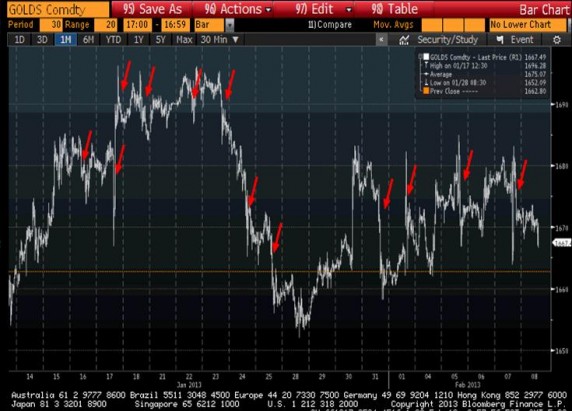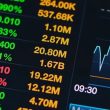by Martin Sibileau, A View from the Trenches
“…The two pillars of the current global financial system are therefore (a) the illusion of the existence of a risk-free asset and (b) the repression of that market which demonstrates that the risk-free asset and its derivatives (stocks, bonds, the Euro, all bred in the repo market) are an illusion….”
During the past weeks I have been on the sidelines, waiting for a relevant event to take place but fully aware that I was wrong. I just wanted to hope. Sometimes, it feels good to hope. But since last September, nothing has really changed. At least not fundamentally and that which seems new, is simply the result of the tectonic shift we had back at the end of the summer (of 2012).
It is vox populi that the rise of Spanish and Italian sovereign yields was triggered by corruption scandals that may be of political consequence. They were not alone, as the Libor affair is still making news. I don’t think scandals by themselves bring consequences, but before I go further, let me discuss the topic of corruption itself, for as I will explain, the ongoing policies will bring nothing else but more corruption.
Corruption in government is simple arbitrage. Whenever governments intervene in a market either by restricting supply or demand, capping or flooring prices, the affected goods will have two prices: The government fixed price and the market price. And because prices are nothing else but critical signals for the process of social cooperation (also known as “market”) to work, markets get confused by two different signals from the same good.
If there is restricted supply of a good, or if the price of a good is capped, the market will be willing to bid more than the current price for that good. That bid will be noticeable and the only economic agent capable of acting on the signalled gap will be someone in power: a government official or a politician. This person’s responsibility will be to allocate scarce resources where they are most needed. The public will call him corrupt, but he will just be an arbitrageur. He will offer an additional quantity of that good which is restricted at a higher price, including his fees (also called “bribes”), of course. He will be simply taking over a function that a repressed market cannot perform at that time.
Government corruption is nothing else but the reflection of a repressed market. The immorality lies not in the act of corruption (i.e. arbitrage), but in the market repression that enables it. And as we all know by now, the repression in the financial markets has only grown exponentially in the past years. This may only mean that more corruption is underway. Above all, the two repressed markets we should all be very familiar with are the ones for US Treasuries and gold.
The US Treasuries market is not really a market. As I understand, about 75% of the issuance expected for February will be purchased by the Fed, whose SOMA account already represents about a third of the stock of Treasuries outstanding, across the curve. How an asset that requires that 3/4ths of its flow be purchased by a central bank to maintain its price can be deemed to have 0% risk and be used as collateral is beyond me! As well, I am completely amazed that we still have analysts from the main banks publishing research notes where they try to assess implied future rates…Implied??? By whom?
This brings me to the gold market. As I mentioned in past letters, Keynesians give a lot of weight to the role of expectations. If they manage expectations to make the public believe that the purchasing power of their salaries has not decreased in real terms, they believe they may get an economic system from recession back to growth. In the same fashion, if they already have a benchmark for real value, say gold, all they need is to suppress the price of this benchmark, to control their expectations. They need not lower the value of the benchmark. Making it volatile enough to discourage any inclination to have that asset used as a store of value is enough. Hence, the endless take down in the price of gold triggered by leveraged sales during thin trading. It has coincidentally taken place ever since the rating on the US Treasuries was challenged by those martyrs at S&P. Below, I show the interventions during the last month (source: Bloomberg).

The two pillars of the current global financial system are therefore (a) the illusion of the existence of a risk-free asset and (b) the repression of that market which demonstrates that the risk-free asset and its derivatives (stocks, bonds, the Euro, all bred in the repo market) are an illusion.










